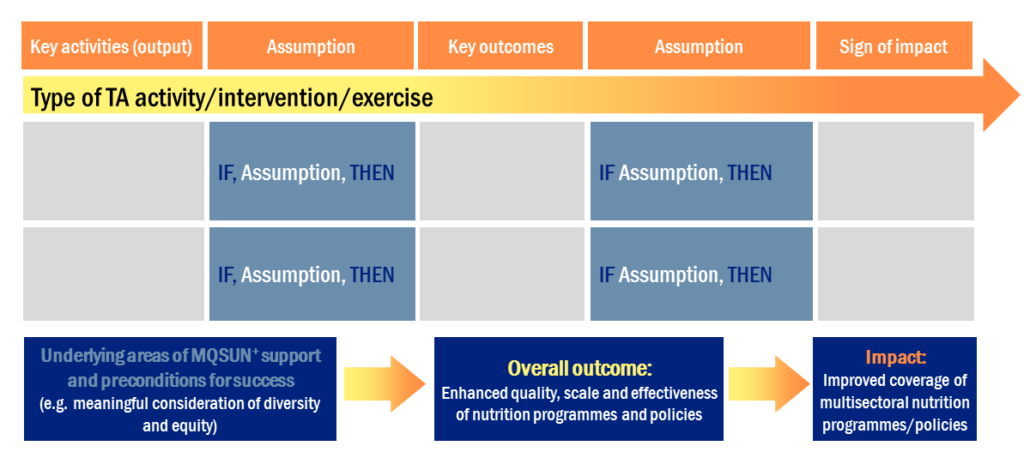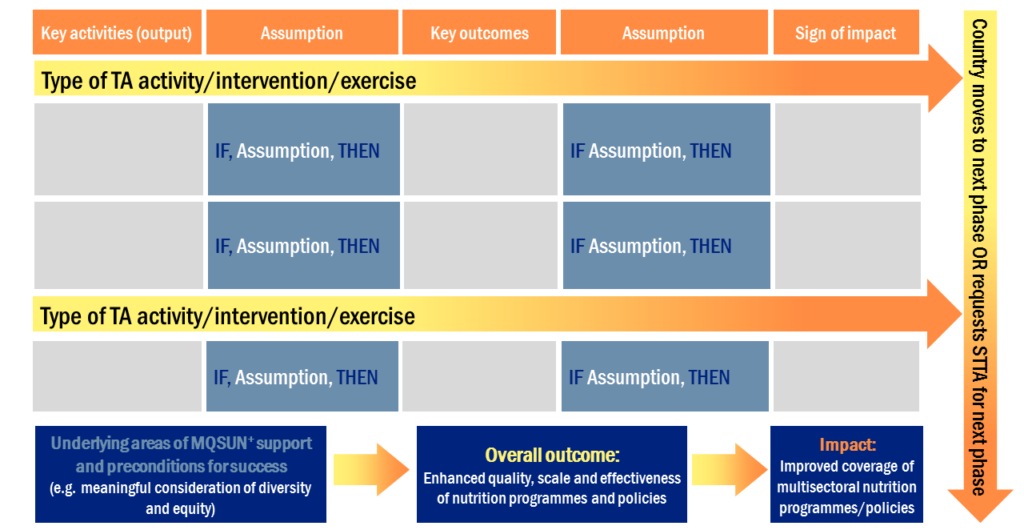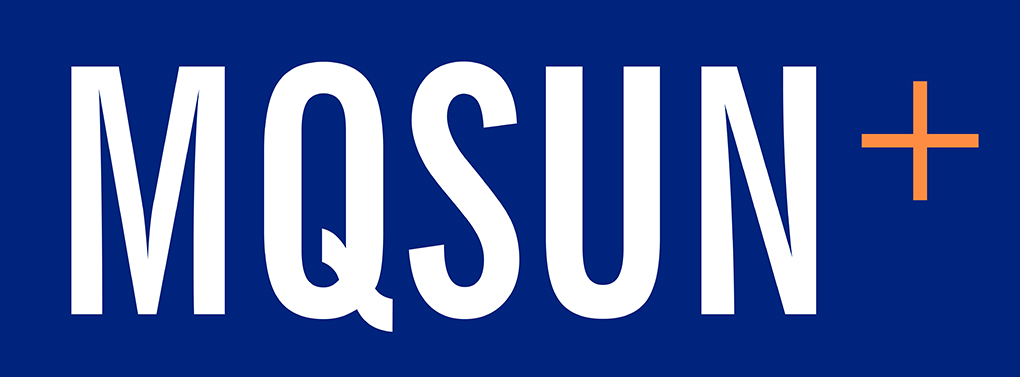When looking at the impact of global health investments, we often want to count the number of beneficiaries, percent reduction in disease prevalence or statistically significant associations between an intervention and a successful outcome. But if we take a closer look at what happens prior to a child receiving peanut paste or antibiotics, we find an ocean of activities that contribute to the enabling environment for scaling up nutrition efforts and improved nutritional status.
The MQSUN+ programme works “behind the scenes” by providing short-term technical assistance (STTA) to countries, donors and implementers to improve the coverage and investment of multisectoral nutrition programmes and policies. This contributes to DFID’s overall nutrition goal of improving the nutrition of at least 50 million people by 2020 by addressing both the immediate and underlying causes of malnutrition, and SUN’s nutrition vision of creating a world free of malnutrition in all forms by 2030.

Logical frameworks (logframe) and theories of change (TOC) are the most common and useful tools for monitoring and evaluating impact and outcomes of a programme design like MQSUN+. A TOC is a useful diagram that describes how change is assumed to occur through interventions or conditions, highlights the causal pathways between these and the intended long-term outcomes, and can provide a theoretical backbone of a programme logframe. While MQSUN+ has a logframe and a TOC, measuring and evaluating impact can be challenging as the STTA we provide is often far removed from the end goal of scaled up nutrition efforts and ultimately improved nutritional status.
To overcome this challenge, MQSUN+ developed an assumption map to further clarify and emphasise the assumptions on which these TOC pathways rest. The assumption map builds upon the TOC by following the hypothesised pathways but helps assess past STTA and guide future STTA activities by elucidating the building blocks and road blocks to progress towards improved coverage of multisectoral nutrition programmes and policies and therefore advance the nutrition agenda. The assumption map is used to understand whether STTA activities met certain assumptions or followed certain preconditions to generate the intended output or outcome. This analysis is captured in a qualitative retrospective case study and feeds back into the assumption map—making this a living document and a feedback tool for adaptive implementation.
Similar to a TOC, the horizontal structure of the assumption map lays out each technical assistance activity output, outcome and signs of impact.

The vertical structure of the assumption map displays how the combined efforts—either with our STTA or independently by the country—will help move towards the next phase or activity to strengthen nutrition efforts and ultimately contribute to improved nutritional status of women of reproductive age and children under five years of age.

MQSUN+ modus operandi is not easily measured in standard terms, but by using an assumption map as the backbone of an assessment of impact, we set the stage not only for showcasing the important and yet often overlooked signs of impact along the pathway but also directly feedback into future STTA or country-led activities.
Stay tuned for an upcoming MQSUN+ brief further detailing our assumption mapping for scaling up nutrition efforts!
For more information on our assumption mapping, contact Arja Huestis, ahuestis@path.org.
Recommended citation: MQSUN+ (2019, 31 March) Moving beyond a theory of change—mapping assumptions toward nutrition impact (part 1) [blog post]. PATH, Washington, DC. Retrieved from: https://mqsunplus.path.org/blog/moving-beyond-a-theory-of-change-mapping-assumptions-toward-nutrition-impact-part-1/





